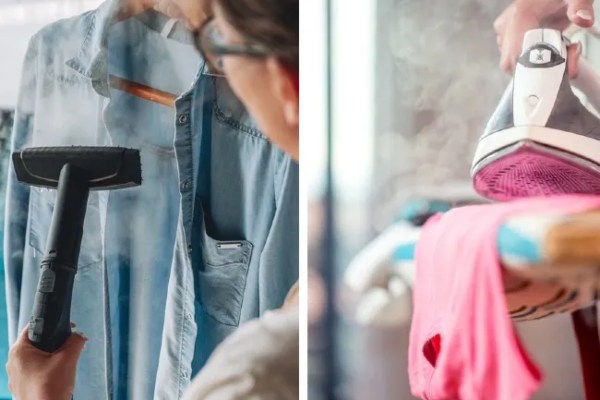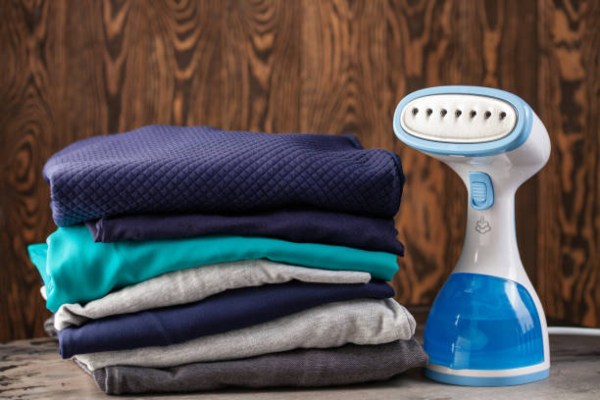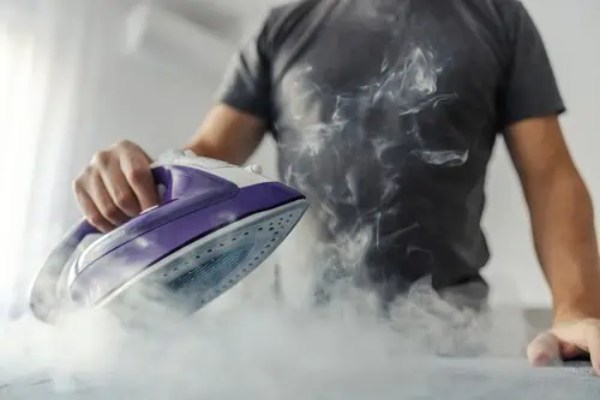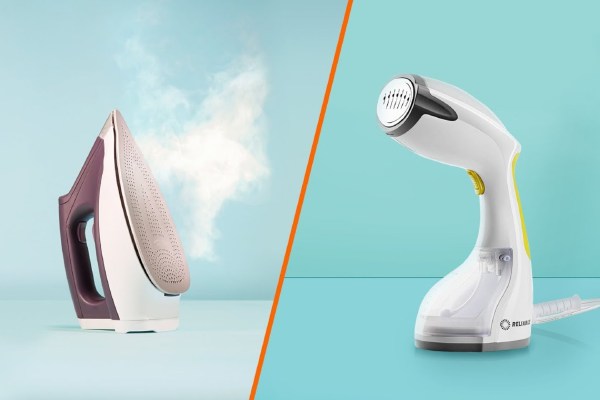Steamers and irons are essential laundry care tools that help remove wrinkles from clothing and household linens. Although both appliances serve similar functionality, each has its own specific benefits. Steamers use heated water to produce steam that relaxes wrinkles, while irons use a heated surface, sometimes combined with steam, to press out wrinkles. This article will explain the benefits of each tool and help you decide which one to use in different laundry situations.
What’s the difference between Steamer and Iron?
Sammy Wang, a fabric care senior specialist with P&G, explains that steamers and irons are not completely interchangeable. He points out,
“Steamers and irons use heat, moisture, and force in different ways to unlock wrinkles, while Iron is best used when clothes are lying flat horizontally, like on an ironing board,”
Steamers help remove wrinkles by using the weight of the hanging garment and steam. Some steamers have attachments that gently pull on the fabric to make the wrinkles come out more easily. On the other hand, irons work best when clothes are placed flat on an ironing board, where they use direct pressure and heat to smooth out wrinkles.

How Does Steamer Work?
Steamers are effective at removing wrinkles from clothing, particularly on fabrics that cannot be safely ironed. Unlike an iron, a steamer doesn’t directly touch the fabric but instead relies on hot steam to smooth out wrinkles. The process begins by heating water inside the steamer until it turns into vapor. This steam is then released to target and loosen the threads and fibers in the fabric, removing wrinkles without the need to press down on the material. Typically, steamers can provide around 15 minutes of continuous steam, and because they don’t make direct contact with the fabric, there is a lower risk of burning or damaging the material. The cost of steamers varies, ranging from $25 to $250, depending on whether you choose a standard standing steamer or handheld steamer.
Standing steamer vs. Handheld steamer
You have the option to choose between a standard standing steamer and a handheld steamer. Handheld steamers are just as effective as standard standing steamers, but because their nozzles are smaller, you may need to pass them over the fabric a few additional times to remove all the wrinkles. Additionally, handheld steamers come with smaller water tanks, so they may require more frequent refills during use. Despite these differences, handheld steamers are especially convenient for travel and are ideal for quickly smoothing out wrinkles on smaller items like shirts.
Laundry expert Mellissa Dilkes Pateras recommends investing in a travel steamer if you frequently need to remove wrinkles from your clothes while traveling. She says,
“You can’t always trust an iron in a hotel not to damage your clothes, and clothes coming out of a suitcase are more than likely wrinkled,”

How Does Iron Work?
An iron is highly effective at removing wrinkles because of its heavy weight, steam output, wide soleplate, and adjustable temperature range. Iron usually comes with a built-in steam feature that handles the temperature based on the fabric you are ironing. Proper ironing requires some technique, and one key factor is using the right surface. The surface should be flat, clean, smooth, and padded to ensure effective ironing. Before ironing, it is also important to check the care label on the garment to confirm that it can be ironed and to find the recommended heat setting. Similarly, some fabrics usually cannot be ironed including silk, wool, cashmere, velvet, corduroy, and other delicate or natural fibers. These fibers can easily melt or scorch under the heat of an iron.
What should choose between steamer and iron?
Choosing between steaming and ironing depends on the type of fabric you are working with and the finish you want to achieve. If you have delicate or flowy clothing, it’s better to use a steamer instead of an iron. A steamer can remove wrinkles from fabrics that can’t be ironed, like silk, wool, or clothes with pleats. Although a steamer won’t give them the sharp, pressed look that an iron would, it makes your clothes smooth, and softer and gives a more relaxed finish.
Patric Richardson, author and host of The Laundry Guy on Discovery+, also suggests,
“A steamer is better when you want a soft, drapey finish,”
Compared to steaming, ironing gives clothes a crisper, more polished finish. Irons are ideal for de-wrinkling durable fabrics like cotton T-shirts, linen, and dress shirts. Also, they are perfect for setting creases in dress pants. It is perfect for getting a sharp, clean look on clothes, like what you would get from a dry cleaner.
Conclusion
In conclusion, both steamers and irons play crucial roles in maintaining wrinkle-free clothing and household linens. However, their effectiveness depends on the fabric and finish one intends to achieve. Steamers are gentle and effective for delicate fabrics and those that can’t be ironed. It gives a softer, relaxed look without direct contact. They are also highly recommended for travel due to their portability. Irons, on the other hand, provide a crisp, polished finish, and are good to go for durable fabrics where sharp creases are needed. Ultimately, your choice between a steamer and an iron depends on the fabric you are dealing with, and the specific results you wish to achieve.

Also read, Expert Tips: How to Shrink Clothes for a Tailored Fit, According To Laundry Specialists
Frequently Asked Questions
1. What is the primary difference between a steamer and an iron?
Steamer uses heated water to produce steam which removes wrinkles without direct contact with the fabric. On the other hand, iron uses a heated surface and sometimes steam to press out wrinkles.
2. What are the benefits of using a steamer?
Steamers are effective for delicate fabrics such as silk and wool and can remove wrinkles from garments that cannot be safely ironed. They are also convenient for travel and quick wrinkle removal.
3. What types of steamers are available?
There are two types of steamers either handheld steamers or standing steamers. Handheld streamers are compact and portable. It is best for travel purposes, however, it may require more frequent refilling and additional passes over the fabric. In contrast, standing steamers are larger with bigger water tanks. It is suitable for home use and can handle larger items more efficiently.
4. When should I use an iron instead of a steamer?
You may choose iron when you need a crisp, polished finish on durable fabrics like cotton, linen, and dress shirts. It is best to set creases in dresses.
5. How do I choose between a steamer and an iron?
When deciding whether to use a steamer or an iron, consider the type of fabric and the finish you want. If you are dealing with delicate fabrics and prefer a softer, more relaxed appearance, a steamer is the best choice. On the other hand, if you want a sharp, crisp finish, particularly for durable fabrics, an iron is the more appropriate option.
